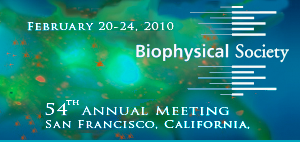Last updated: Tuesday 07-May-2013 2:07 AM
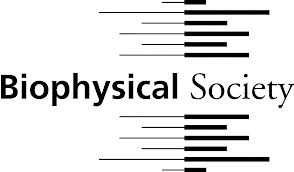 |
Sept 14, 2012 | Keynote News Professor Sakmar to present Keynote lecture at regional Biophysical Society Meeting, Physics and Chemistry of Biological Systems, at Lehigh University? |
|
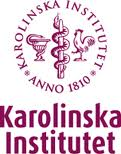 |
Sept 7, 2012 | Meeting News Professor Sakmar welcomes an international panel of scientists to a symposium at the Nobel Forum, Karolinska Institutet, Stockholm, Sweden "Harnessing Nature's high performance materials for regenerative medicine"
|
|
May 7, 2012 | ACS Chemical Biology |
||
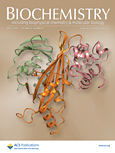 |
April 24, 2012 | Biochemistry Amy Grunbeck's paper highlighted as "Most Read Rapid Report" in Biochemistry in 2011
|
|
|
||
 |
Nov 9, 2011| Obituaries & Tributes
[link to .pdf of paper PLOS Biology] |
|
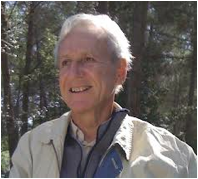 |
July 10, 2010 | Obituary
Marc Chabre (1936–2010), pioneering quantitative biologist, dies on July 10, 2010 |
|
 |
Respect for Chemistry Highlighted in Hit AMC Series, Walt (Bryan Cranston) explains his motivation to Gus (Giancario Esposito), who surprises him with a state-of-the-art process chemistry lab. Images and video clip courtesy of: "I simply respect the Chemistry. The Chemistry must be respected." |
|
| Kelly Daggett Paper most downloaded of 2009
???not sure why this was here....more data needed???
|
||
April 11, 2010 | Nature Online "Tracking G-protein-coupled receptor activation using genetically encoded infrared probes" Heptahelical G protein-coupled receptors (GPCRs) in cell membranes act as molecular switches. Precisely how receptors turn on in response to ligand binding is not known. To track the earliest protein conformational changes in the receptor activation pathway, Shixin Ye of the Sakmar Lab and an international team of collaborators engineered rhodopsin, a prototypical GPCR, to contain unique azido probes. The engineered receptors were interrogated by FTIRdifference spectroscopy to show that certain light-induced conformation changes happen much more quickly than had been expected. |
||
"New probe technology illuminates the activation of light-sensing cells." Through ingenious combinations of roughly 20 amino acids, the basic building blocks of life, genes can build the proteins that comprise everything from the simplest bacteria to the human brain. In new research published today in Nature, scientists unveil a new technique to illuminate the function of those proteins. The method of genetically targeting a non-natural amino acid to specific locations within a protein could theoretically be adapted to place a fluorescent probe at any position in any protein in a mammalian cell. April 12, 2010 | Physorg.com Seeing (infra)red. Scientists designed genetically encoded probes to examine the workings of the visual pigment rhodopsin (pictured above) with infrared spectroscopy. The probes revealed that light causes changes in the protein much faster than previously believed. |
||
'Signal Transduction' Highlighted in Hit Motion Picture, Avatar Images and video clip courtesy of: |
||
|
||
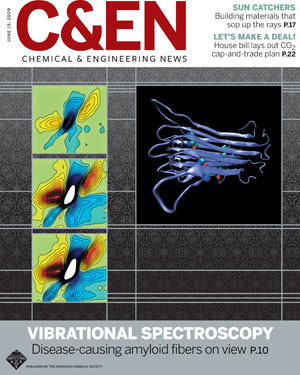 |
June 15, 2009 | Chemical & Engineering News |
|
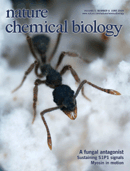 |
April 26, 2009 | RU Newswire | Nature Chemical Biology | Physorg.com | |
|
"FTIR analysis of GPCR activation using azido probes"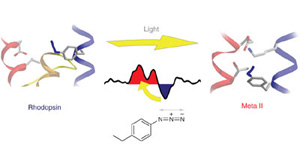 |
||
| New tag could enable more detailed structural studies of mammalian proteins
by effectively expanding the genetic code, new research reveals a method that could theoretically be adapted to place a fluorescent probe at any position in any protein in a mammalian cell. The new technology could enable single-molecule fluorescent studies in live cells. |
||
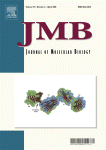 |
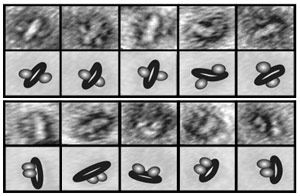 March 6, 2008 | RU Newswire | Science Daily | March 6, 2008 | RU Newswire | Science Daily |Nanoscale tool allows scientists to study membrane proteins one at a time A new device is capable of encasing single membrane proteins from living cells, allowing investigators to individually stimulate key proteins with specific molecules and signals in order to precisely define the biological reactions that result. |
|
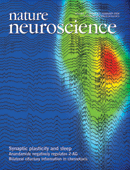 |
December 23, 2007 | science news New method enables scientists to see smells Animals and insects communicate through an invisible world of scents. By exploiting infrared technology, researchers at Rockefeller University just made that world visible. Now, with the ability to see smells, these scientists show that the brains of Drosophila melanogaster larvae not only make use of stereo cues to locate odors but also to navigate toward them. |
|
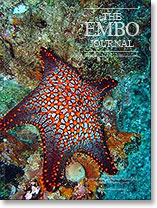 |
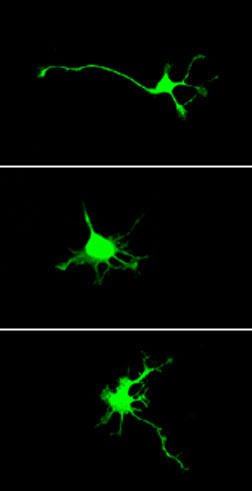 June 14, 2007 | science news June 14, 2007 | science newsProtein is linked to functional development of brain neurons Rockefeller University investigators say that a molecule that helps transport cargo inside nerve cells may have another, critically important, role related to how developing neurons sprout the projections that relay electrical signals within the brain. |
|
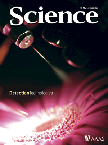 |
March 29, 2006 | science news Lizard’s ‘third eye’ sheds light on how vision evolved A primitive third eye found in many types of lizards, used to detect changes in light and dark and to regulate the production of certain hormones, may help explain how vision evolved and how signals are transmitted from the eyes to the brain. Now, new experiments show that the molecular mechanisms that underlie this parietal eye’s responses to light are similar to those that transmit responses from rod and cone cells in the eye to the brain. |
|
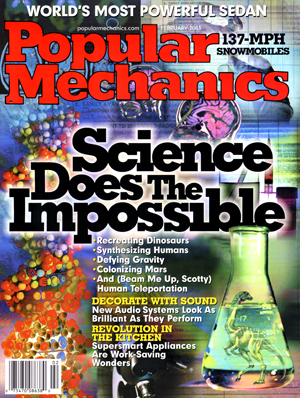 |
September 2005 | Popular Mechanics | Canadian Broadcasting Co. | Science Daily | Scientist claim they've grown a part of a 250-million-year-old archosaurus, a creature so old it's actually an ancestor to the dinosaur. Dr. Belinda Chang is a molecular biologist with Rockefeller University's Thomas Sakmar Laboratory. She led the research, and she's in Manhattan.
|
|
January 24, 2003 | Science News Nobel laureate, British cancer biology researcher elected ninth RU President |
||
Sept 3, 2002 | Science News Researchers recreate 240-million year old protein in test tube |
||
April 8, 2002 | RU Campus News Rockefeller University Announces Scholarship Fund in Name of Employee Who |
||
 |
Feb 22, 2002 | RU News Release Editor's note: Wednesday, Feb. 12, Acting |
|
 |
September 2000 | HHMI bulletin | Student interns in Tom Sakmar's lab work and learn beside their mentors, creating a productive and fun experience for both.
|
|
Aug 27, 1999 | Science News | Researchers Propose New Theory to Explain How Visual Pigments are |
||
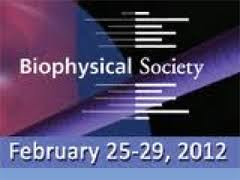 Feb 25, 2012 | 2012 Biophysical Society Meeting
Feb 25, 2012 | 2012 Biophysical Society Meeting  April 18, 2010 |
April 18, 2010 | 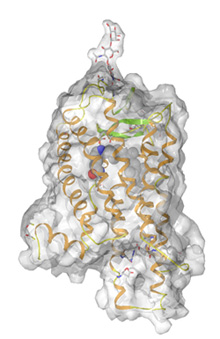 April 11, 2010 | Rockefeller Newswire
April 11, 2010 | Rockefeller Newswire